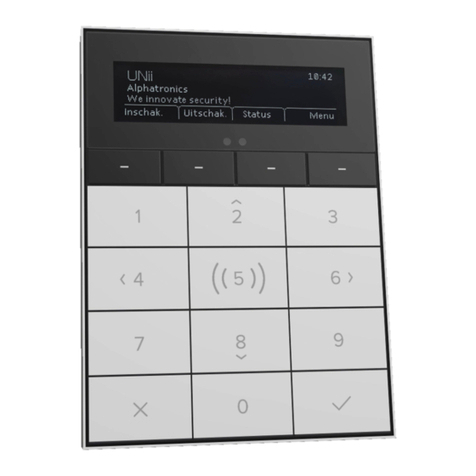
2
Table of contents
UNii door controller.............................................................................................................................................4
Mounting...............................................................................................................................................................4
Connections .........................................................................................................................................................5
Connections .........................................................................................................................................................6
Power supply........................................................................................................................................................6
Backup power supply .........................................................................................................................................6
Protection against discharge............................................................................................................................6
Low battery voltage ............................................................................................................................................6
230V mains connection .....................................................................................................................................7
Jumpers ................................................................................................................................................................7
General specifications........................................................................................................................................8
Fuses .....................................................................................................................................................................8
Service ...................................................................................................................................................................8
Identification.........................................................................................................................................................8
AT-100...................................................................................................................................................................9
System requirements .........................................................................................................................................9
Wiring.....................................................................................................................................................................9
Measurements...................................................................................................................................................10
Mounting steps..................................................................................................................................................11
Connections and indicators ............................................................................................................................12
Connecting Card Reader interface.................................................................................................................14
AT-100 with pigtail............................................................................................................................................14
AT-200P ..............................................................................................................................................................15
System requirements .......................................................................................................................................15
Wiring...................................................................................................................................................................15
Measurements...................................................................................................................................................16
Location...............................................................................................................................................................16
Mounting steps..................................................................................................................................................16
Connections .......................................................................................................................................................17
Technical specifications AT-100 / 200P ......................................................................................................17
Connecting AT-100 and AT-200P to Card Reader Interface ....................................................................18
Connecting AT-100 and AT-200P to Door controller.................................................................................19
AT-300.................................................................................................................................................................20
Mounting steps..................................................................................................................................................20




























